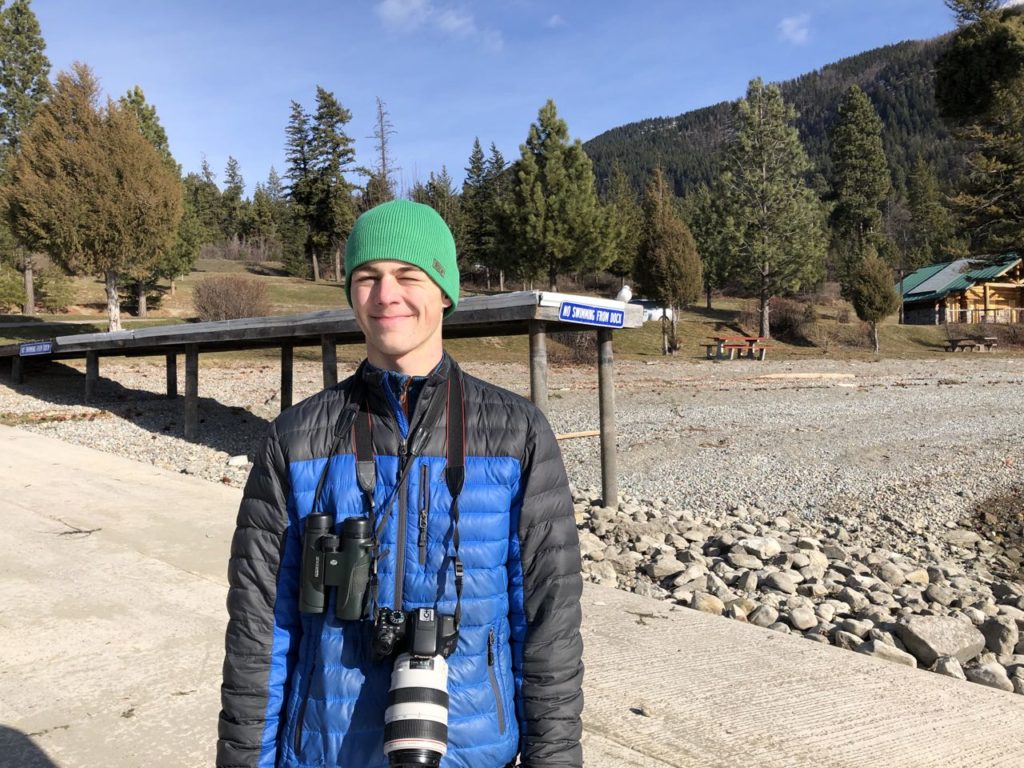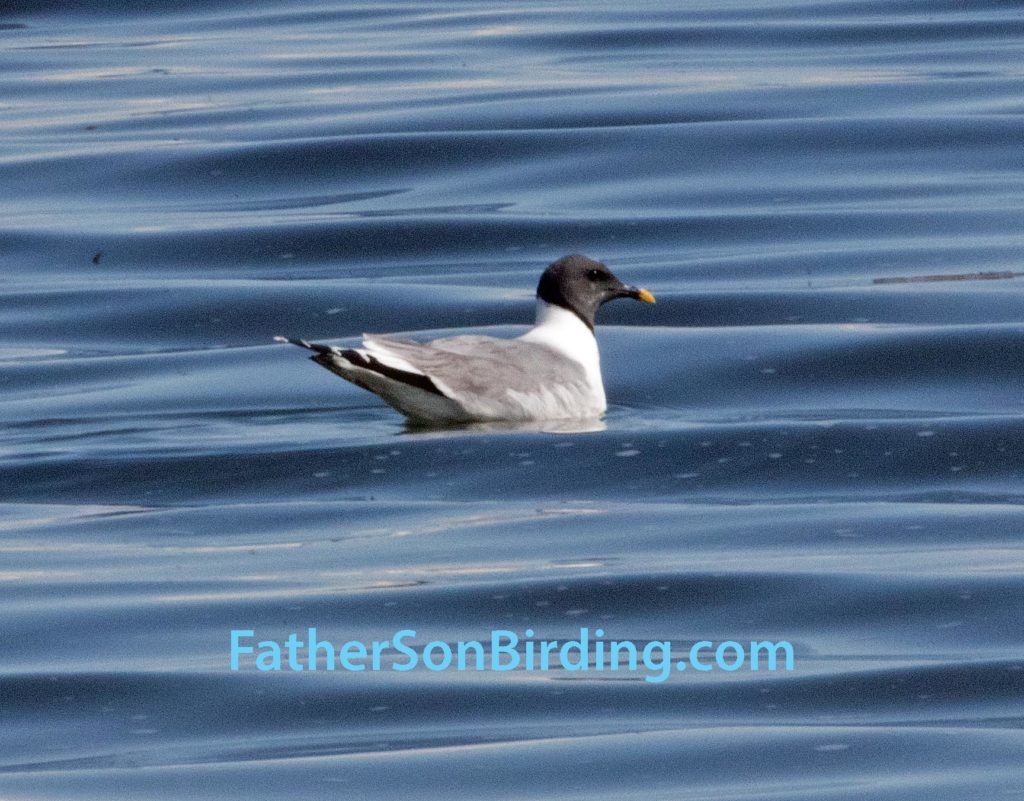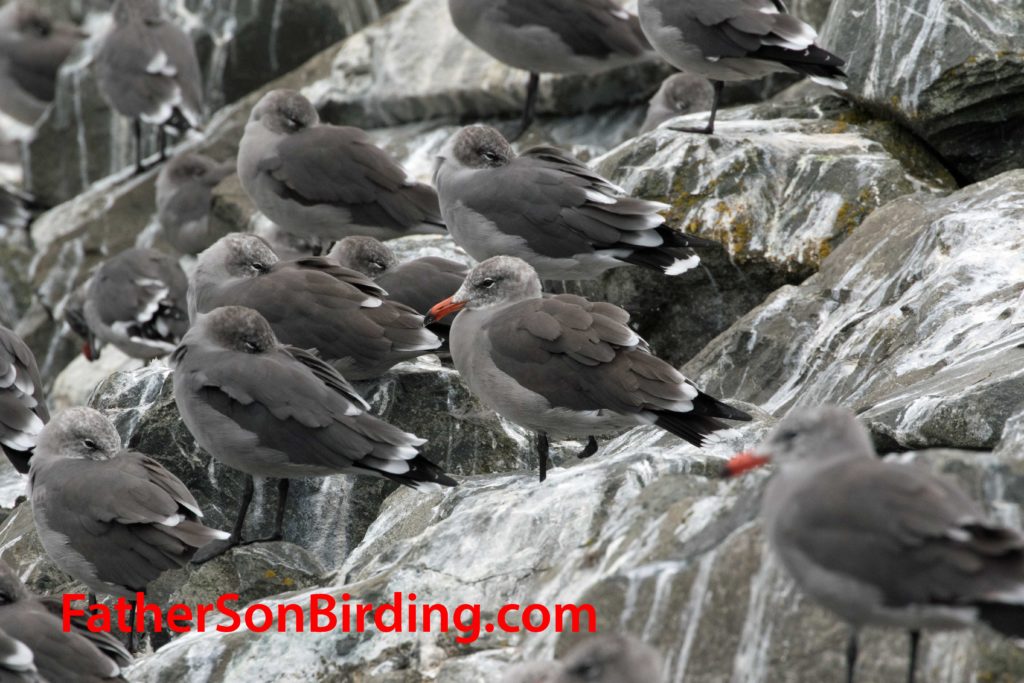Hey Everyone! Well, the hackers are back. We’ve had a number of suspicious sign ups recently so if you really have subscribed in the last three months, please shoot Sneed a confirmation email at collard@bigsky.net and I will make sure that you stay subscribed. Meanwhile, feel free to share this post with all the wonderful birders in your lives. Thanks!
On Tuesday, February 4th, my dad woke me up at 7 o’clock, a restful relief from the 4:45 wake-up time I’d adapted to being on the Hellgate High School Swim Team. Despite an increasingly significant school workload, I’d decided (with parental permission, of course) to take my birthday off and head north to bird with my dad. Aside from the obvious perks of birding places like Ninepipe National Wildlife Refuge and Flathead Lake, we had several goals in mind. A few days earlier, an Ivory Gull, an incredibly rare arctic species, had been sighted at Blue Bay on Flathead. There was also supposedly a Northern Hawk Owl, a boreal species that rarely visited the United States, at Swan River National Wildlife Refuge in the valley just to the east of the lake. We set out at eight o clock, fifteen minutes after the bell for my school rang, heading north with visions of rare birds soaring through our minds.
Though the gull, being the rarest of the possibilities today, was our priority, we had to make several stops. First, we made a speed-run of Ninepipe, visiting both the frozen lake itself and a nearby road that supposedly had been supporting a Ferruginous Hawk all winter. The hawk wasn’t quite as rare as the other species we were chasing, but raptors proved hard to find even in their regular, summer habitat in the eastern prairies. Today, we found the white-breasted bird fairly easily, along with several Red-taileds, Bald Eagles, Rough-leggeds and a Prairie Falcon flashing its dark armpits as it fled from a telephone pole. At Ninepipe itself, we almost collided with an airborne Ring-necked Pheasant, and crept down a dirt drive to snap photos of a possible Ross’s-Snow Goose hybrid.
We grabbed a delicious breakfast at the Ronan Cafe, then drove north through Polson, stopping at a fishing access on Flathead to check for gulls. The Ivory had last been seen heading south, and this hotspot, known as the Ducharme Fishing Access, also reliably held uncommon arctic and seafaring gulls like Iceland, Herring and Mew. In fact, due to the lake’s size, seabirds showed up on an annual basis, confusing it with an inland sea. The Ivory Gull was just the most recent, and possibly rarest, of these visitors. Today, however, we glimpsed only a few Ringed-billeds in the distance.
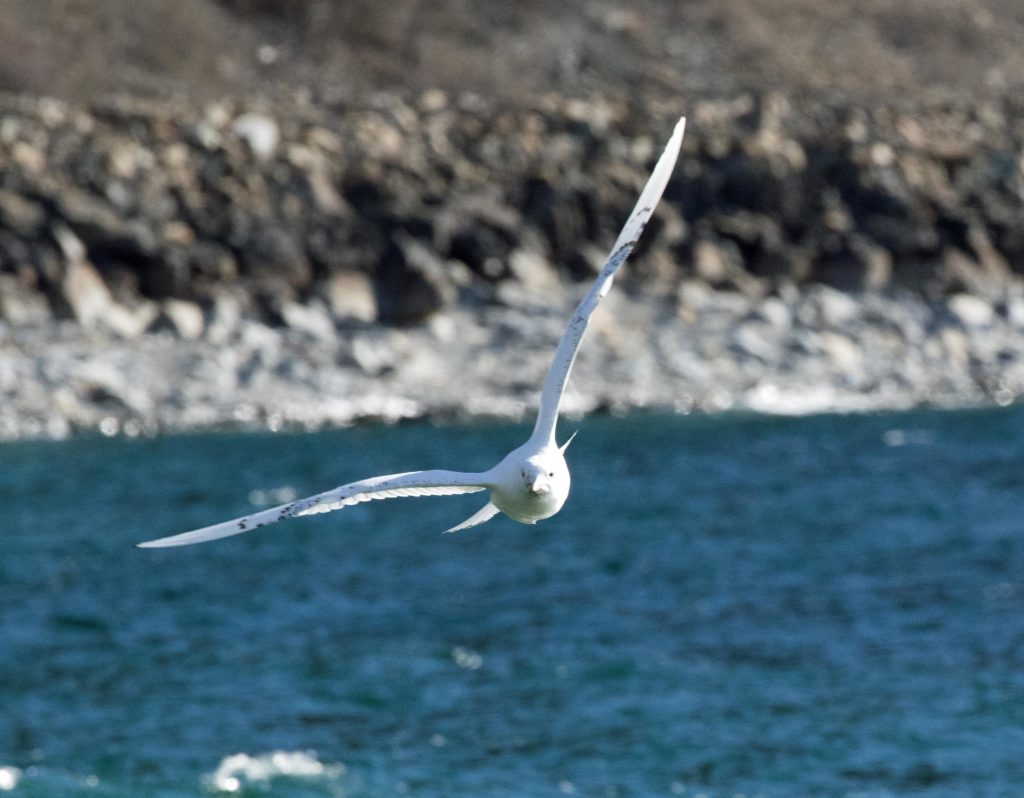
Normally, my dad and I don’t have the best luck chasing rarities. We’ve successfully found a few, usually by accident or thanks to excessive diligence of Nick Ramsey. Last summer, for instance, we chased an Indigo Bunting, Virginia’s Warbler, Black-throated Gray Warblers and Blue-gray Gnatcatchers in central Montana, only finding the bunting, which was difficult to miss in its neon blue plumage. When we pulled up to Blue Bay, though, we found two birders and one bird. That bird was the Ivory Gull, dressed in blank plumage dotted with black. At first we thought it was a plastic bag, due to its immobility, and proceeded to freak out immediately after raising our binoculars. The other birders, who had travelled from Washington to see this bird that normally dwells among the pack ice with polar bears, left fairly quickly after our arrival, leaving us alone on the beach to bask in the bird’s rarity and fill up our camera memory cards. The gull was incredibly tame, at one point landing five feet from us on a dry dock!
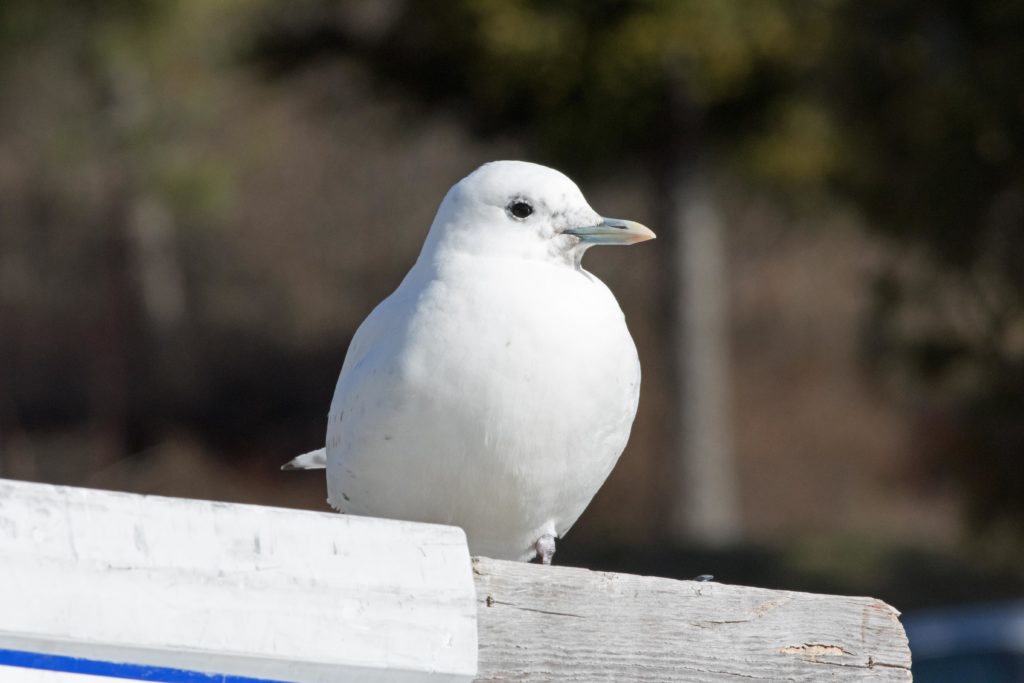
After our success with the gull, we decided to drive north, then east, to Swan River in hopes of finding the owl. The location had been given to us by Nick, and it was much less direct and accessible than the gull had been. First we pulled off the highway at a makeshift parking lot, far from civilization, then trudged a mile through snow to a huge, open field. We proceeded to check and double-check the top of every pine, fir, larch and spruce in the area, searching for the diurnal bog-dweller. After searching the entire south end of the field, where the owl was supposed to be, we took a quick glance across the other side of the field. On a particular conifer far from us, a gray smudge caught the edge of my vision. I took a distant photo, confirming that it indeed was a gray smudge, and we continued to walk towards it. Once we got close enough to determine that it was at least bird-shaped, it disappeared!
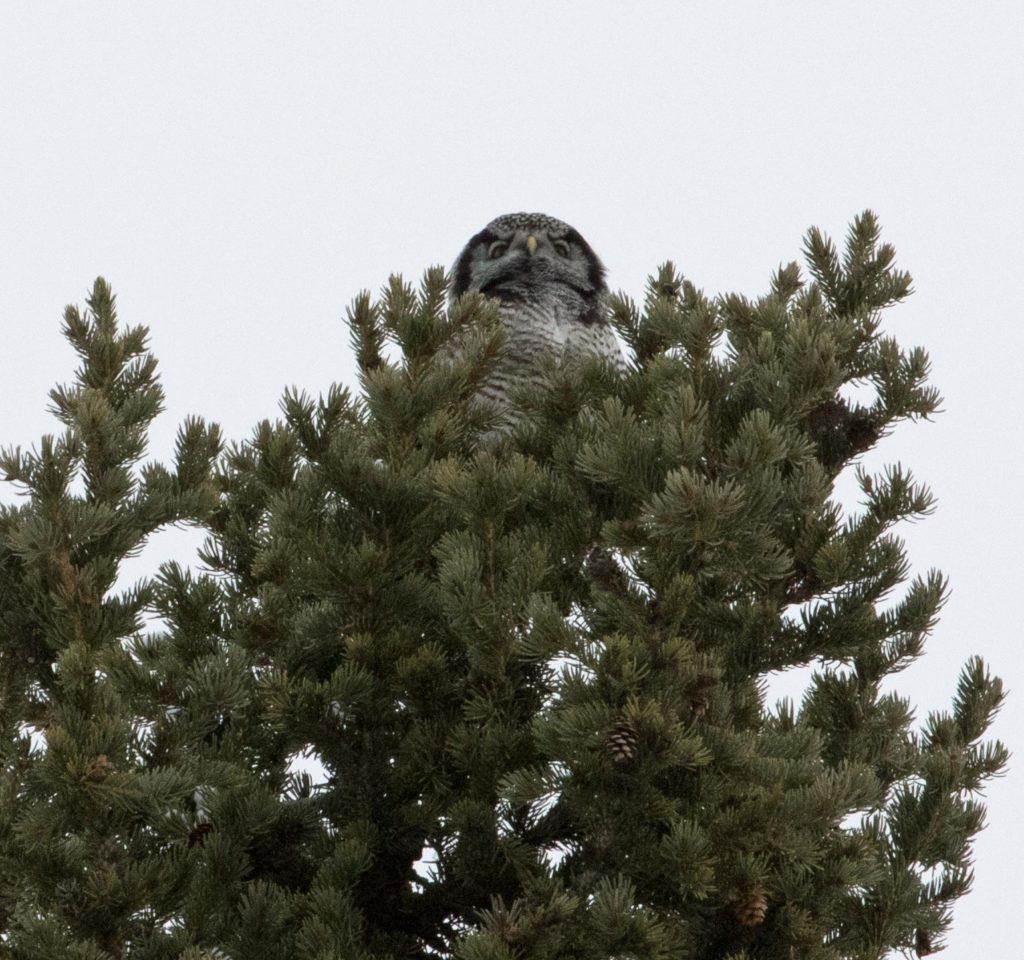
We frantically began re-checking every tree in the area, eventually relocating it again and—it was the owl! This time we didn’t take our eyes off it, eventually getting to about twenty feet from the tree that it perched on top of, like a star on a Christmas Tree. It glared at us, and we stared back, taking in its broad shoulders, square head and beautifully-patterned plumage. In an attempt to get better photos, my dad crossed a ditch, filling his rain boots with ice-cold water, and after the owl got bored with us, everyone departed. We had set out and seen every bird we’d wanted to, including three rarities, one of which (the gull) would quickly become at least nationally famous! To seal the deal, on the way home we glimpsed a Northern Shrike, another uncommon winter species that we hadn’t seen in a while. All in all, an incredible bird-filled birthday!
